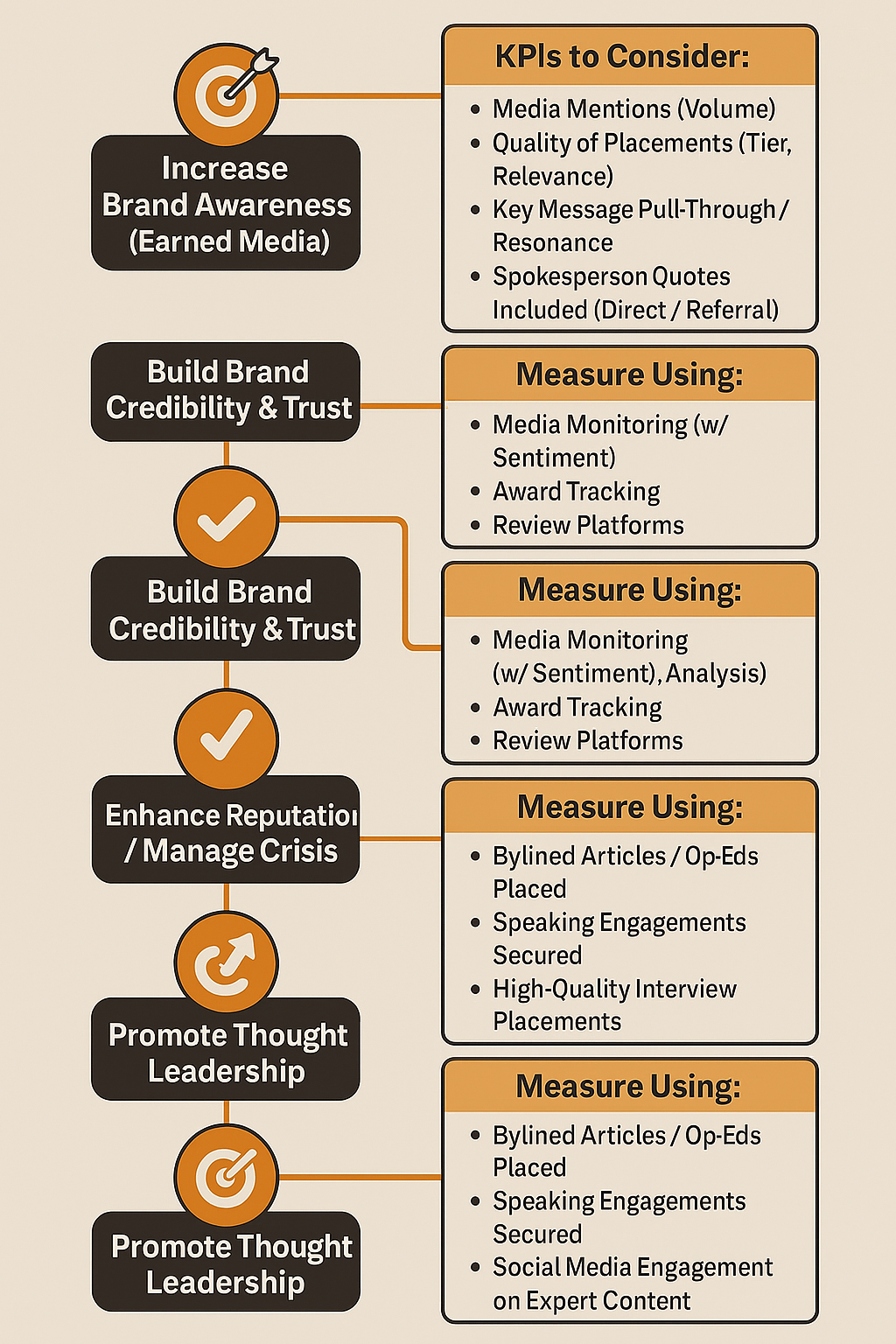Setting KPIs for PR Campaigns

How to set targets for your PR Campaign
Hits, mentions, impressions and Share of Voice matter. They give you valuable insights into how visible your message is. But if PR’s main job is to manage relationships with your organizations’ publics, these numbers don’t tell you much about relationships. If PR is about how the public sees and trusts your organization, impressions can’t measure that. At best, they’re a weak stand-in. But, sometimes, they’re the best bad option we have.
So how do you pick a campaign’s KPIs?
Start with ‘why’. What is your business trying to accomplish? Break into a new market? Rebuild trust? Get acquired? Your PR strategy should be designed to move the needle on those outcomes. If it isn’t, it’s time to reopen your strategy. Provided your strategy is already aligned, then your goal should be to pick the closest thing that you can measure to the objective you’re looking to hit. For example, Let’s say you’re launching into a new sector, and your objective is to build credibility and a strong reputation with people in the industry. “Secure 30 hits” would be meaningless on its own. But “increase our share of voice among analysts and tier-one and trade media by 15% in 12 months” maps directly to the business’ objectives and provides a clear benchmark for success.
Measure outcomes, not just activity.
Press releases, interviews, media briefings are outputs but ultimately aren’t the objectives you should be trying to achieve. What matters is whether your work changed anything: did awareness grow? Did perceptions shift? Did new opportunities open up?
Sometimes these things may be measurable through quantitative data, for example if your organization measures things like brand recall and brand awareness, if your campaign is large enough to be the obvious cause of an influx of direct or branded search traffic, or significant signals on social media that link to your campaign; but most of the time, organizations aren’t able to keep ongoing and regular brand surveys, and PR Campaigns aren’t large enough able to make discernible signals across secondary channels like web.
You need the numbers—message pull-through, sentiment analysis, competitive visibility. But without human interpretation, these are meaningless. Landing a story where your brand is mentioned among 20 others, or where it’s mentioned as an aside may not be as valuable as a profile in a tier 1 publication, for example. Pull-through of your message when your press release is picked up by Yahoo is not the same as an article written by staff writers at Yahoo.
But this doesn’t let your PR team off the hook, either. The general health of your PR channels should be measured, looking at data like:
- How consistently key messages are landing (pull-through)
- Overall sentiment
- How your visibility stacks up against competitors—in the right places
- Who’s engaging with the content, and what they do next (e.g., site visits, demo requests, social sharing)
Then layer in human judgment:
- Was the outlet credible and influential?
- Did the reporter get the nuance?
- Did the story reinforce your core narrative—or dilute it?
Don’t evaluate earned media like a paid campaign.
Earned isn’t about clicks or instant conversion. The reason you do it: trust, relevance and influence. You’re not buying impressions; you’re supposed to be shaping perception. The best coverage changes perception in ways that money can’t buy.
Smart PR teams are less concerned with vanity metrics.
They use a strategy-first approach. They define meaningful goals that are measured by the things that are closely related to the organization’s goals.
Having trouble picking out goals?
We can help. With over 15 years of goalsetting experience including having been a digital media analyst for Ford Motor Company, Brand Aid can help you to choose your KPIs for your next campaign.